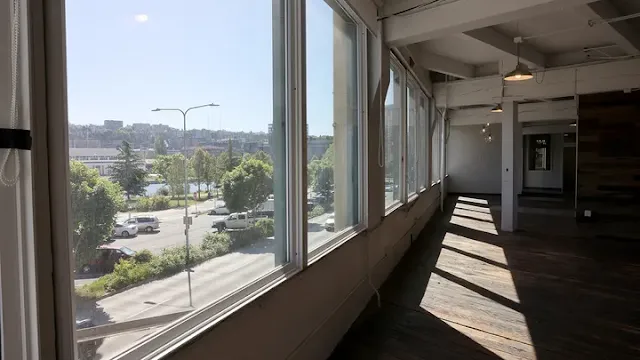Nearly four years post the onset of
the COVID-19 pandemic, the commercial real estate landscape remains disrupted.
The aftermath includes the bankruptcy of mismanaged entities like WeWork, a 30
percent vacancy rate in markets such as San Francisco, and significant space
reduction costs for companies like Dropbox.
For landlords, this translates to challenging times, with an increasing number relinquishing keys back to lenders. Conversely, tenants are in a favorable position, wielding leverage to negotiate better pricing and more flexible terms. While some landlords struggle, others seize the market shift to provide amenities that were traditionally reserved for major clients, such as prominent law and accounting firms.
The DMV's (District of Columbia,
Maryland, and Virginia) commercial real estate market fares relatively well
compared to other metros due to a substantial government presence and the
attraction of associations, nonprofits, and lobbying firms linked to the
nation's political hub. However, suburban vacancies are exerting pressure on
property sale values, and reduced property tax revenues are constraining local
government budgets. In the District itself, predominant vacancies exist in
older, larger buildings, posing a disadvantage for amenity-rich, modern
structures as empty storefronts and "space
available" signs diminish their appeal.
In response to the amenities race,
landlords initially introduced features like fitness centers, conferencing
facilities, and roof decks. However, what was considered impressive a decade
ago now appears outdated, akin to the conventional five-day, in-person work
week and fax machines. Joey Coleman, renowned author of "Never Lose An Employee Again,"
emphasizes that the best landlords are those who "deliver a remarkable experience, taking into account what would
genuinely make people excited to return to the office and say, 'I LOVE that
we're back!’”
The solution lies within the problem, as forward-thinking landlords are reevaluating the traditional landlord-tenant relationship. Similar to how Starbucks turned coffee into an experience and Chick-fil-A offers fast food with award-winning politeness, these landlords are fostering two-way relationships and redefining how they communicate value to tenants.
In the DMV and beyond, landlords
are adopting strategies to retain existing tenants and secure new leases:
Retain Existing Tenants: Address
the demand for reduced space by engaging in transparent conversations with
tenants about their evolving needs. Proactively understand their new space
requirements and construct move-ready, simplified spaces within six months,
earning gratitude for saved rent and potentially securing longer leases.
Cost-Effective Improvements: Implement
cost-effective and appealing brick-and-mortar improvements to stay competitive.
While it might not outshine others, it keeps you in the same neighborhood,
metaphorically speaking.
Superior Customer Service: Create a
welcoming environment by training staff to deliver superior customer service.
Today's front-office staff goes beyond generic greetings, accompanying tenants
to address issues like a malfunctioning air conditioning unit and making
personalized introductions to external vendors for a comprehensive hybrid
experience.
Understand Tenant Preferences: Identify the specific preferences of potential tenants. Some prioritize trendy amenities like a coffee bar and a "Zoom room," while others may prioritize location and affordability, even if the building is slightly dated.
 |
| Commercial office space is seen empty in a building owned by GEM Real Estate Partners that is up for sale in the South Lake Union neighborhood in Seattle, Washington, U.S. May 14, 2021 |
Vacancy rates are on the rise in
the DMV, signaling a shift in tenant-landlord interactions. Rather than
resembling an annual review or doctor's check-up, where anticipation of bad
news prevails, successful owners, building managers, and front-desk staff are
fostering genuine relationships. The focus is on understanding tenant
preferences and effectively communicating how management is actively addressing
those needs.
Todd Sherbacow, a partner in Clarity Tenant Representation and the founder of tenant services firm SuiteMatters, along with Dustin Siggins, a nationally published business writer and the founder of Proven Media Solutions, highlight the evolving dynamics in the landlord-tenant relationship.


0 Comments